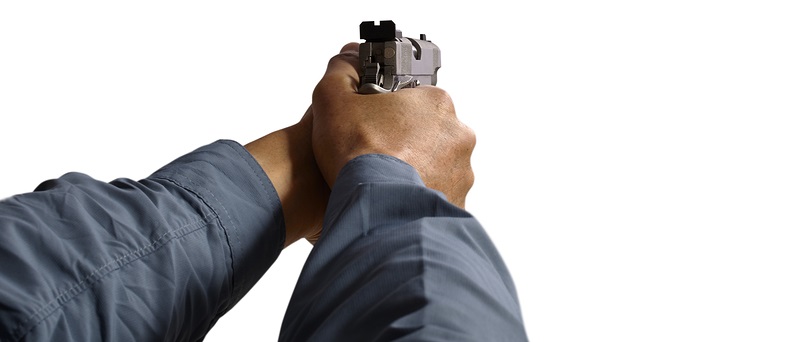Learning to shoot better is from a balance of live fire at the range and dry-fire away from the range. Do it with a purpose to get the most from it! READ HOW
SOURCE: Team Springfield, Posted by Ivan Gelo
Dry-practice should be a fairly significant and useful portion of your training package — especially when learning a new technique or focusing on specific principals like the four below.
SAFETY FIRST
Let’s start with the basic safety rules for dry-firing:
CONDUCT with your full concentration — no distractions.
ENSURE the gun is unloaded — no magazine inserted.
VISUAL & TACTILE CHECK — With the slide (or bolt) locked back (via the ejection port) look into the barrel chamber and down through the grip area toward the magazine well to confirm that the firearm is unloaded and no magazine is inserted.
DOUBLE CHECK that all magazines are unloaded — no live ammo.
REMOVE all ammunition from the dry-fire area.
PLACE targets to use as specific aiming points.
CHOOSE a suitable backstop / direction, so that if a round was to discharge, your backstop stops the bullet and causes no injury and minimal physical damage.
Before doing that first trigger press — CHECK AGAIN that the gun is unloaded. Once you’ve gone through the safety checklist, you’re ready to start your dry-fire practice.
1. TRIGGER PRESS DRILL
This is a great exercise that focuses on keeping the gun as still as possible while learning to manipulate the trigger quickly:
Rack slide to set the trigger.
With the gun in your two-handed firing grip at full presentation, bring the gun back to your “natural handclap position” while maintaining grip pressure and hand positions. (I got this description from Ron Avery many years ago — thanks Ron!)
Focus your attention downward, where you are essentially looking over the top of the gun — you are primarily seeing the top of the slide. Press the trigger as you so deem necessary — imagine the type of shot you are trying to replicate, i.e. shooting a group at 15 yards.
As you work the trigger up to the point the striker or hammer is released, pay specific attention to how much left or right movement there is while looking at the top of the slide.
Most new shooters will see movement to the left or right and/or down or up. This is typically caused by movement in the hands or by the trigger finger. No movement at all means you’ve done a good trigger press!
Repeat starting at Step 1. Once you are able to hold the gun still, increase your trigger press speed. Focus on the consistency and stillness of your hand/grip pressure as you increase the speed of your trigger press. Work up to the point where you are working the trigger quickly — one-eighth-of-a-second from start to finish of press. Minimal to no movement is the goal.
2. START POSITION VARIATIONS
At a match you will, and in real life you might, be drawing from positions other than standing, gun loaded and holstered, with both feet stable on even ground. Practicing varied positions can be extremely beneficial.
Vary your dry-fire start position:
Seated
Holding an item in your hands
Kneeling
Standing behind a wall
Facing “uprange”
You can also vary the gun’s start position:
Gun on a table
Gun in a box
Gun in a drawer
3. MASTER MOVEMENT
Once you’ve practiced some of these different start “positions,” incorporate movement during your draw or after retrieving your firearm. Movement changes everything! Relocate yourself left, right, forward, back during your practice.
4. BEDTIME ROUTINE
At night, do you keep your firearm on a nightstand, in a drawer, or in a bed-mounted holster? If so, when was the last time you dry-practiced getting out of bed to retrieve your firearm from its location?
And in what condition is your firearm? If you keep your firearm “cruiser ready” or “condition 3” (magazine inserted and seated with the chamber empty), have you practiced racking your slide under duress?
In this situation, dummy or inert training rounds are invaluable! NEVER use live ammo at home to practice quickly loading your gun! Safety first — always.
When using training rounds, go through your safety checks very deliberately — again, remove all live rounds from the training area and check and then check again that all rounds are inert.











